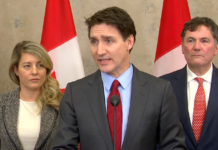It wasn’t that long ago— April 2022—more shocking news hit the business wires that more than half of Canadians, at 53%, were just $200 away from insolvency.
The number of Canadians who are so close to financial insolvency at month-end had jumped to 46%, up from 40% in the previous quarter, as interest rates continued to rise.
A survey conducted for the insolvency firm MNP Ltd. in December also found that 31% of Canadians say they don’t make enough to cover their bills and debt payments, up seven percentage points from the September poll.
Now, somewhat unexpectedly and rather hawkish, the Bank of Canada (BoC) this week ended its interest rate pause and raised its benchmark rate by 25 basis points to 4.75%.
It spells doom to 53% of Canadians—punishing them for gorging on the cash when money was almost free, and taking on mortgages that would not be affordable for long.
The central bank pointed to stubbornly high inflation and a resilient Canadian economy as the reasons why the governing council decided its monetary policy was not yet restrictive enough to bring growth in the consumer price index back to its 2% target.
“Those who own a home or who plan to renew their mortgage are at a higher risk when it comes to being unable to absorb higher interest rates,” said Grant Bazian, president of MNP Ltd. “They will be facing higher monthly payments that could be dramatic. We are talking hundreds of dollars more per month that they hadn’t initially planned for.
“And with the increasing costs of food, gas and everything else, it is a perfect storm for some households that were already stretched to the max,” he said.
MNP reports that: “A quarter (25%) of Canadians say they have taken on more debt because of the pandemic. This includes using credit cards (14%), using a line of credit (7%), taking out a bank loan (3%), or deferring mortgage payments (3%).
One in five (20%) has also reported raiding their emergency savings to pay their bills.”
“Those taking on more debt are becoming increasingly vulnerable to interest rate increases in the future. They may find their debt rapidly becoming unaffordable when those invariably happen,” explained Bazian.
“Unfortunately, using credit is a reflex for many Canadians. For those concerned about the mid- to long-term consequences, it is probably a good time to start thinking of debt as a trap, rather than the solution.”
While BoC Governor Tiff Macklem sounded like he was in no rush to raise rates at his press conference in mid-May — focusing on broader trends rather than downplaying the rebound in housing — this week’s policy statement read like there was little doubt that a hike was appropriate.
The BoC’s key message is that “excess demand in the economy looks to be more persistent than anticipated” and there is growing risk that inflation “could get stuck materially above the 2% target.
Macklem last month warned he was prepared to increase rates if it appeared inflation could remain stuck above the bank’s 2% target rate.
The rate today is 4.4%,
“Ultimately, Governing Council raised the policy rate because they think monetary policy isn’t sufficiently restrictive to bring inflation back sustainably to 2%,” the BoC said in its statement.
The central bank faced criticism last year for not hiking rates in January when headline inflation stood at 4.8%. At least one economist said lessons learned from that experience may be why the central bank raised rates now instead of waiting until July.
“By acting aggressively, the bank is likely trying to restore its credibility as an inflation fighter,” Charles St-Arnaud, chief economist at Alberta Central, said in a note.





















